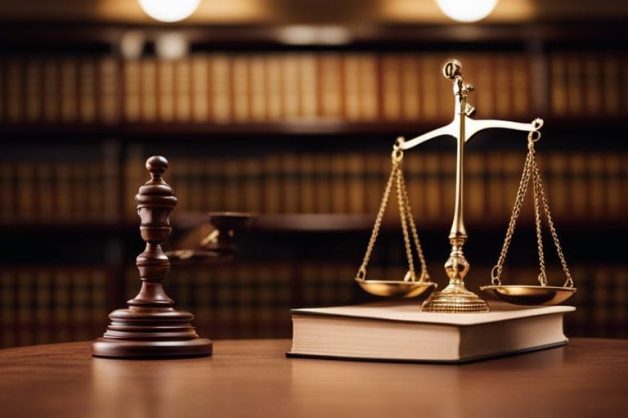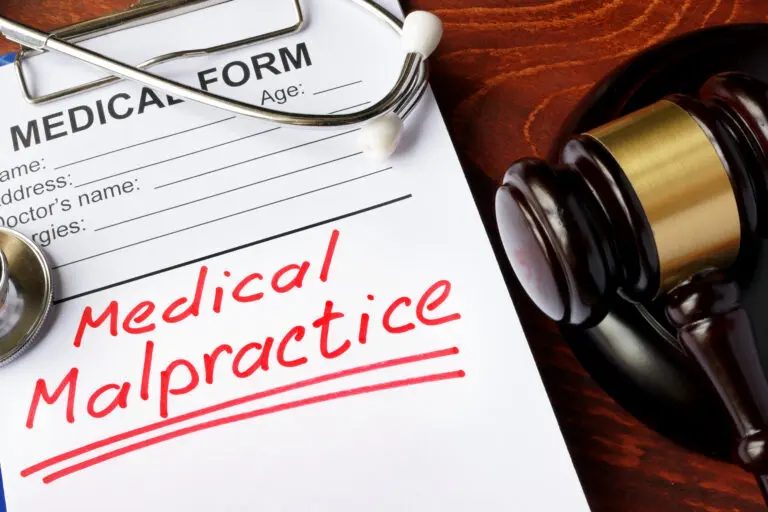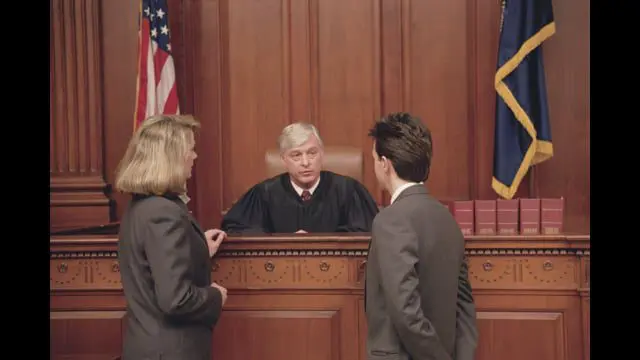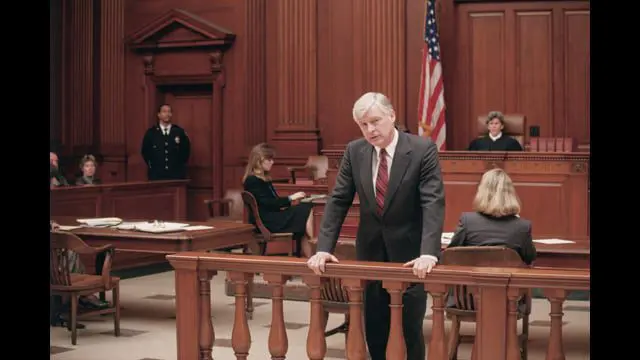Military law is a specialized legal field that governs the conduct of service members in the armed forces. It encompasses a broad range of legal issues, from administrative procedures to criminal offenses, ensuring that military personnel adhere to the standards and regulations set by military authorities. This comprehensive guide explores the intricacies of military law, highlighting key legal insights, the rights of service members, and the courtroom procedures involved in military justice.
The Structure and Purpose of Military Law
Military law serves to maintain order and discipline within the armed forces. It is distinct from civilian law and is administered through a separate system of military courts and tribunals.
The Uniform Code of Military Justice (UCMJ)
En Uniform Code of Military Justice (UCMJ) is the foundation of military law in the United States. Enacted by Congress, the UCMJ outlines the legal standards and procedures for the armed forces, covering a wide range of offenses from minor infractions to serious crimes.
The UCMJ applies to all branches of the military and governs the conduct of active duty personnel, reservists, and, in certain circumstances, retired service members. It includes provisions for court-martial procedures, non-judicial punishments, and administrative actions.
The Role of Military Courts
Military courts are responsible for enforcing the UCMJ and adjudicating cases involving military personnel. These courts operate under a hierarchical structure, with different levels of authority and jurisdiction.
- Summary Court-Martial: Handles minor offenses and consists of a single officer who serves as judge and jury. The summary court-martial has limited sentencing powers.
- Special Court-Martial: Similar to a civilian misdemeanor court, it deals with intermediate offenses. It consists of a military judge and at least three panel members (jurors). Sentences can include confinement, reduction in rank, and fines.
- General Court-Martial: The highest level of military court, it handles the most serious offenses, equivalent to felonies in civilian courts. It consists of a military judge and at least five panel members. Sentences can include long-term confinement, dishonorable discharge, and, in some cases, the death penalty.
Legal Rights of Service Members
Service members have specific legal rights under military law, designed to ensure fair treatment and due process.
Right to Legal Representation
Service members have the right to legal representation in court-martial proceedings. This includes the right to be represented by a military defense attorney, known as a Judge Advocate, or to hire a civilian attorney at their own expense.
Legal representation is crucial for navigating the complexities of military law and ensuring that the service member’s rights are protected. Attorneys provide guidance on legal strategies, help gather and present evidence, and advocate on behalf of the service member.
Right to a Fair Trial
Service members are entitled to a juicio justo, which includes the right to be presumed innocent until proven guilty, the right to a speedy trial, and the right to confront and cross-examine witnesses. These rights are enshrined in the UCMJ and are essential for ensuring justice in military courts.
The right to a fair trial also includes the right to present evidence and call witnesses in defense. This allows service members to fully participate in their defense and challenge the prosecution’s case.
Right to Appeal
If convicted, service members have the right to appeal the decision of a court-martial. Appeals are heard by higher military courts, such as the Court of Criminal Appeals y el United States Court of Appeals for the Armed Forces. These courts review the trial record for legal errors and ensure that the conviction and sentence are just and lawful.
The appeals process provides an additional layer of oversight and helps protect against wrongful convictions and excessive sentences. It also allows for the correction of any procedural or legal errors that may have occurred during the trial.
Courtroom Procedures in Military Justice
Understanding the procedures involved in military justice is essential for service members and their legal representatives.
Pre-Trial Procedures
Before a court-martial, several pre-trial procedures take place, including investigations, charging decisionsy preliminary hearings.
- Investigations: Military investigators gather evidence, interview witnesses, and compile reports on the alleged offense. The results of the investigation determine whether charges will be brought.
- Charging Decisions: La commanding officer reviews the investigation report and decides whether to refer the case to a court-martial. This decision is based on the severity of the offense and the evidence available.
- Preliminary Hearings: Known as Article 32 hearings, these proceedings determine whether there is sufficient evidence to proceed to a court-martial. The defense has the opportunity to present evidence, cross-examine witnesses, and argue for dismissal of the charges.
Court-Martial Procedures
During a court-martial, the prosecution and defense present their cases, including opening statements, witness testimony, and closing arguments. The procedures are similar to civilian criminal trials but follow the rules and standards set by the UCMJ.
- Opening Statements: Both sides outline their case and what they intend to prove.
- Testimonio de testigos: Witnesses for both the prosecution and defense are called to testify. This includes direct examination, cross-examination, and re-direct examination.
- Closing Arguments: Both sides summarize their case and argue why the panel members should find in their favor.
The panel members then deliberate and reach a verdict. If the service member is found guilty, the court proceeds to the sentencing phase, where both sides present evidence and arguments regarding the appropriate sentence.
Common Offenses Under Military Law
Military law covers a wide range of offenses, from minor disciplinary infractions to serious criminal acts.
Disciplinary Infractions
Disciplinary infractions are minor violations of military rules and regulations. These offenses are typically handled through non-judicial punishment (NJP) under Article 15 of the UCMJ.
Examples of disciplinary infractions include:
- Absence Without Leave (AWOL): Failing to report for duty without authorization.
- Disrespect to a Superior Officer: Acting in a manner that disrespects or undermines the authority of a superior officer.
- Failure to Obey Orders: Willfully disobeying lawful orders issued by a superior officer.
Non-judicial punishment can include measures such as reprimands, loss of privileges, extra duties, and reductions in rank.
Serious Criminal Offenses
Serious criminal offenses are handled through court-martial proceedings and can result in severe penalties. Examples of serious offenses include:
- Desertion: Abandoning one’s post or duty without the intention of returning.
- Asalto: Committing acts of violence against another person.
- Robo: Stealing property belonging to the military or another individual.
- Sexual Assault: Engaging in non-consensual sexual acts.
These offenses are subject to rigorous investigation and prosecution, with penalties that can include long-term confinement, dishonorable discharge, and, in extreme cases, the death penalty.
Comparative Analysis: Military vs. Civilian Law
While military law shares similarities with civilian law, there are key differences that reflect the unique needs and structure of the armed forces.
Competencia y autoridad
Military law operates under a separate jurisdiction from civilian law. Military courts have exclusive authority over service members, while civilian courts handle cases involving civilians and certain offenses committed by service members outside of military jurisdiction.
This dual system ensures that service members are held to the high standards of conduct required by military service while also being subject to the broader legal framework that governs society.
Protección jurídica
Service members have additional legal protections under the UCMJ that are not available in civilian law. For example, the right to a military defense attorney at no cost and the right to appeal to higher military courts are unique to the military justice system.
These protections are designed to ensure that service members receive fair treatment and that their rights are upheld throughout the legal process.
Casos prácticos y ejemplos
Examining real-life cases can provide valuable insights into the application of military law and its impact on service members.
Case Study: The Fort Hood Shooting
En Fort Hood shooting involved Major Nidal Hasan, who was charged with multiple counts of murder and attempted murder following a mass shooting at Fort Hood, Texas. The case highlighted the complexities of military law, including the challenges of investigating and prosecuting serious offenses within the military justice system.
Major Hasan was ultimately convicted and sentenced to death by a general court-martial, demonstrating the military’s ability to handle serious criminal cases with the same rigor and seriousness as civilian courts.
Case Study: The Eddie Gallagher Case
Chief Petty Officer Eddie Gallagher was accused of war crimes, including the murder of an ISIS prisoner. The case drew significant media attention and raised questions about the conduct of military personnel in combat zones.
Gallagher was acquitted of most charges but was convicted of posing with the body of the deceased prisoner. The case underscored the importance of adhering to the UCMJ and the ethical standards expected of service members, even in the challenging context of combat operations.
Cambios y tendencias legislativas
Military law is subject to ongoing legislative changes and emerging trends that reflect evolving societal values and the needs of the armed forces.
Legislative Reforms
Recent legislative reforms have focused on improving the military justice system and addressing issues such as sexual assault, discrimination, and the treatment of service members.
For example, the Military Justice Improvement and Increasing Prevention Act aims to enhance the independence and fairness of military trials by placing the authority to prosecute serious offenses in the hands of independent military prosecutors rather than commanding officers.
Emerging Trends
Emerging trends in military law include increased attention to mental health issues, the use of technology in legal proceedings, and the integration of restorative justice practices.
These trends reflect a broader shift towards a more holistic and supportive approach to military justice, recognizing the unique challenges faced by service members and the importance of maintaining a fair and effective legal system.
Ethical Considerations in Military Law
Ethical considerations are paramount in military law, guiding the conduct of legal professionals and service members alike.
Professional Responsibility
Military legal professionals have a professional responsibility to uphold the highest ethical standards in their practice. This includes ensuring fairness, integrity, and justice in all legal proceedings and advocating for the rights and interests of service members.
Ethical conduct requires transparency, honesty, and diligence in handling cases, as well as a commitment to upholding the principles of military justice and the rule of law.
Conflict of Interest
Conflictos de intereses can arise when legal professionals have personal or financial stakes in the outcome of a case. It is essential to disclose and address any potential conflicts to maintain the integrity of the judicial process.
Managing conflicts of interest involves ensuring impartial decision-making and avoiding actions that could be perceived as biased or self-serving. Legal professionals must prioritize the interests of their clients and the broader principles of justice.
Technology and Tools in Military Law
The use of technology and advanced tools has transformed the handling and presentation of evidence in military law.
Forensic Analysis Tools
Advanced forensic analysis tools enable the examination of physical and digital evidence with greater accuracy and efficiency. Tools such as DNA sequencers, digital forensics software, and 3D modeling can provide detailed insights that were previously unattainable.
Forensic analysis tools must be properly validated and used by trained professionals to ensure reliable results. Courts often require expert testimony to explain the use and findings of these tools.
Evidence Management Software
Evidence management software helps legal professionals track, store, and manage evidence throughout the legal process. These systems ensure a clear chain of custody, secure storage, and easy access to evidence.
Evidence management software can also streamline the discovery process by allowing for the efficient organization and sharing of digital evidence. These tools support compliance with evidence rules and enhance the overall effectiveness of legal proceedings.
Desglose detallado de las consecuencias jurídicas
Understanding the legal consequences of offenses under military law can help service members appreciate the importance of adhering to military standards and regulations.
Criminal Penalties
Criminal penalties under military law can include confinamiento, dishonorable discharge, reduction in ranky fines. The severity of the penalties depends on the nature of the offense and the circumstances surrounding it.
Confinement involves imprisonment in a military correctional facility, while a dishonorable discharge results in the loss of military benefits and a permanent record that can impact future employment opportunities. Reduction in rank and fines are additional penalties that can affect a service member’s career and financial stability.
Administrative Actions
In addition to criminal penalties, service members may face administrative actions for minor infractions. These actions can include letters of reprimand, administrative separationy non-judicial punishment.
Administrative actions serve to address misconduct that does not warrant a court-martial but still requires disciplinary measures. These actions can have long-term effects on a service member’s career and reputation within the military.
Conclusión
Understanding military law and the legal rights and responsibilities of service members is crucial for ensuring the integrity and fairness of the military justice system. By adhering to legal standards, presenting reliable evidence, and challenging questionable evidence, legal professionals and service members can contribute to the pursuit of justice.
This comprehensive guide highlights the importance of military law in maintaining discipline and order within the armed forces, providing valuable insights for legal professionals, service members, and individuals navigating the complexities of the military justice system. By staying informed about military law and courtroom procedures, parties can confidently participate in legal proceedings and help achieve fair and just outcomes.
Attorneys.Media Video Document References
- Is Personal Injury Part of Your Law Practice?
- As an Attorney, How Are You Generating Content for Your Online Presence?
- How Can You Help Potential New Clients Get Their Questions Answered?
- How Do You Differentiate Yourself When Someone Looks Online for Help?
- How Do You Differentiate Yourself as a Criminal Defense Attorney?
- Have You Been Thinking About Video Marketing for Your Law Firm?
- Should Attorneys Use Video Marketing to Attract New Clients?
- What Do Potential Clients See When They Research Your Name Online?
- Cómo puede ayudarle Attorneys.Media









